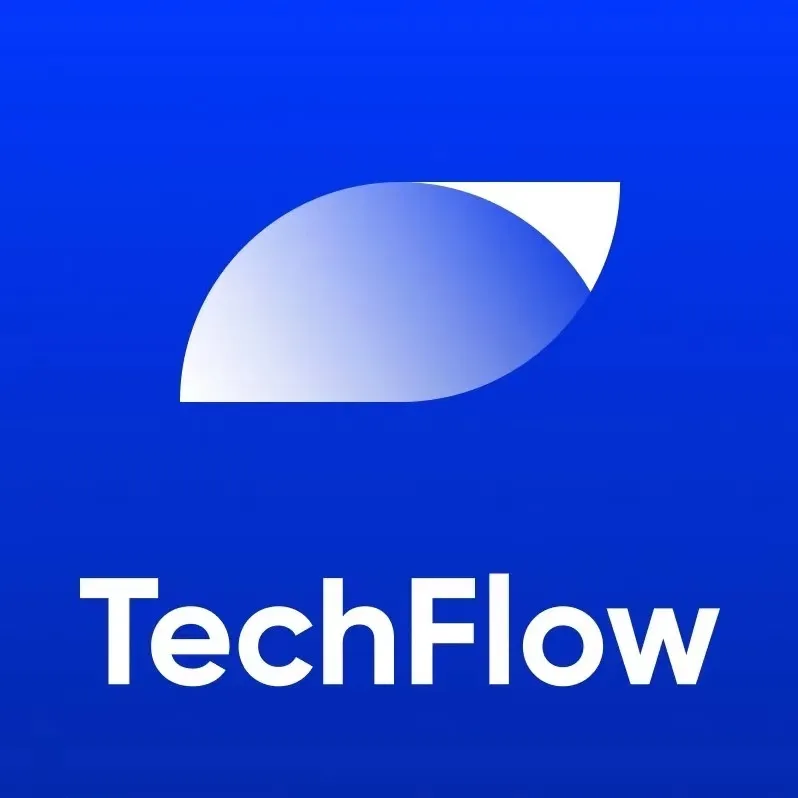Perspective: Bitcoin Ecological Tracks and Representative Projects to Watch in 2024
Written by: defioasis
Edited by: Colin Wu
With the major exchanges Binance and OKX listing ORDI, SATS, and RATS (contracts) as mainstream assets, other inscribed assets are still struggling to take the lead, and the listing of Bitcoin inscriptions on exchanges has gradually entered a vacuum period. Alongside the approval of the BTC ETF and speculation around the ETH ETF, the ETH/BTC exchange rate continues to strengthen, with some funds gradually shifting from BTC to ETH, moving from the BTC ecosystem to the ETH ecosystem. The Bitcoin ecosystem may be entering a calm Build phase.
This article will analyze the Bitcoin ecosystem track based on personal understanding and review the representative projects in the track. It is worth noting that the Bitcoin ecosystem is still in its infancy and carries high risks, so investors need to make rational judgments.
Launchpad
BRC-20 provides a convenient way to issue assets on the Bitcoin network, offering grassroots opportunities for a comeback while also allowing various low-quality inscribed projects to occupy network space and distract user attention. In line with the intention of filtering quality projects for users, Launchpad was born. Launchpad is currently one of the most mature tracks in the Bitcoin ecosystem, not only building the first line of security for user investments but also continuously empowering its platform token.
However, as the number of staking users grows, the winning rate and share will become increasingly competitive; and to maintain the value of the platform token, Launchpad needs to continuously introduce new projects. In this process, especially when more users rely on Launchpad, it may intentionally or unintentionally list low-quality assets due to underlying interests. Even high-quality assets can easily lead to complaints from early users if returns do not meet expectations.
TurtSat
TurtSat is one of the mainstream launchers on Bitcoin Ordinals and has established partnerships with OKX, Galxe, UniSat, and DWF Labs. Most of the projects incubated/launched by TurtSat have yielded good returns, including CHAX Bitcoin and MultiBit, but there are also concerns about issues such as severe insider trading by the Dova project team and collaboration with the suspected shell project Copycat.
Bounce
The core of Bounce's product is a decentralized auction platform that allows users to create and participate in auctions for tokens and NFTs. Before entering the Bitcoin Ordinals space, Bounce's AUCTION token had already been listed on major exchanges such as Binance, OKX, and Coinbase; its projects launched on Bitcoin include the Bitcoin stablecoin protocol BitStable and the Ordinals DID protocol BDID.
Bounce's smart contract has completed an audit by Salus Security, which was invested in by Binance Labs.
DeFi
Before being listed on centralized exchanges, the trading method for inscribed assets was similar to earlier NFT listing trades, unable to achieve instant transactions. The lack of smart contracts on the Bitcoin network makes it very difficult to implement DeFi functions similar to Ethereum DEX and lending on Bitcoin. Currently, there are several ways to indirectly or through third-party solutions achieve similar functionalities: utilizing third-party protocols, executing smart contracts on sidechains parallel to the Bitcoin blockchain; cross-chain technology; Atomic Swaps; and the Lightning Network L2.
ALEX
ALEX is an integrated trading platform for crypto assets that uses Bitcoin as the settlement layer and Stacks as the smart contract layer. Currently, ALEX has launched the B20 (Orderbook) swap function, allowing users to trade BRC-20 assets through AMM.
ALEX has accumulated $8.3 million in financing and received an undisclosed amount of strategic financing last December.
BendDAO
BendDAO is a well-established lending project on Ethereum NFTs that announced its embrace of the BTC ecosystem last December, offering BTC NFT lending services and supporting wBTC liquidity pools as borrowable assets. It is currently exploring seamless interaction between BTC NFTs and BendDAO, with solutions relying on third-party cross-chain bridges and multi-signature wallet cross-chain bridges.
BitStable
BitStable is a Bitcoin network stablecoin protocol incubated by Bounce. BitStable is cleverly designed, allowing users to mint stablecoin DAII on the Bitcoin network using BRC-20 assets ORDI, MUBI (MultiBit), and BSSB (platform token) as collateral, and it can be destroyed through the MultiBit cross-chain bridge to exchange for ETH DAII; due to the lack of smart contracts, the governance system's decision-making capability is crucial, allowing for manual adjustments to minting, burning, and collateral parameters. Additionally, BitStable has built a staking function for DAII on the Bitcoin network, where staking DAII can earn platform token BSSB.
BitStable also supports providing collateral from Ethereum, primarily using USDT as collateral for DAII. According to the official website, the current supply of DAII is approximately 21.73 million, of which ERC-20 DAII accounts for 21.64 million, with collateral including 18.63 million USDT and 3 million FDUSD from ERC-20, as well as 6,479 ORDI, 1.33 million MUBI, and 9,000 BSSB from BRC-20.
BitStable has completed an audit by Salus Security.
BitFlow
BitFlow provides users with an open-source platform on Bitcoin that allows trading and earning yields using BTC, utilizing partially signed Bitcoin transactions (PSBT), Atomic Swaps, and Stacks Bitcoin (sBTC) technologies. Its core functions include stablecoin trading, Bitcoin trading, unilateral liquidity, and yield mining. BitFlow plans to launch BTC Atomic Swaps in the fourth quarter of 2023, but it has not yet gone live.
BitFlow has received investments/donations from the Stacks Foundation and Bitcoin Startup Lab, and has completed audits by Coinfabrik and StrataLabs.
Cross-Chain Bridges
Bitcoin's cross-chain bridges may be significantly more important than EVM cross-chain bridges, as they not only facilitate the migration of assets on the Bitcoin network but also serve as an important pathway for Bitcoin to access more complex financial systems. However, due to Bitcoin's value and influence, the security of its cross-chain bridges is particularly crucial; any security vulnerabilities could lead to significant economic losses and market impacts. The design and implementation of cross-chain bridges need to strictly consider security and decentralization, and this security must not only prevent potential hacker attacks but also provide solutions for crises arising from index consensus divergence of certain assets.
MultiBit
MultiBit is the first BRC-20 cross-chain bridge project between Bitcoin and EVM networks incubated by TurtSat, enabling token transfers across different networks through multi-signature contracts and relying on listening nodes to monitor transaction statuses on the Bitcoin and EVM networks. Since its launch, MultiBit Bridge has completed over $490 million in cross-chain transaction volume. Additionally, MultiBit supports transferring NFTs from Bitcoin to Ethereum and will expand to include staking, mining, and trading functionalities in the future.
MultiBit has completed an audit by Salus Security.
Layer 2
There is still much debate about the necessity of Bitcoin Layer 2, which primarily depends on the understanding of the current performance of the Bitcoin network, future development goals, and market demand. For instance, the popularity of BRC-20 has led to a significant increase in network transaction fees, with hopes for L2 solutions to batch process transactions on the main chain to reduce costs. However, any L2 must maintain the network's security and decentralization while improving efficiency; whether users have a strong enough demand for faster and cheaper Bitcoin L2 is also a question. L2 could lead to different tiers within the Bitcoin ecosystem, raising questions about whether assets that leave the expensive Bitcoin mainnet still belong to the Bitcoin network itself. Regardless of the debate, proponents are moving forward on the path to Bitcoin Layer 2.
Bitfinity Network
Bitfinity is an L2 network built on ICP that is EVM-compatible for Bitcoin and on-chain assets, using a threshold encryption scheme called Chain-Key, which can create a decentralized cross-chain bridge between Bitfinity and the Bitcoin mainnet. The Chain-key private key is periodically regenerated every 11 minutes through "moon-math." Bitfinity has launched a testnet and is expected to launch its mainnet in January-February, with a native token BFT.
Bitfinity completed a $7 million token financing round in January this year, with investments from Polychain Capital and ParaFi Capital, among others, and its latest valuation reached $130 million.
Nubit
Nubit is a Bitcoin-native data availability layer launched by Riema Labs, aimed at changing the way Bitcoin network transactions are processed to make them more cost-effective and efficient. Additionally, Riema is researching the Bitcoin-native data availability standard BRC-1310, which includes BTC staking, data availability sampling techniques, direct data proofs on the Bitcoin network, and decentralized bridges, which will reduce trust requirements, increase data throughput, lower costs, and improve data accessibility.
Riema Labs completed an undisclosed amount of angel round financing in January this year, with investments from Bounce Finance, BRC-20 founder domo, and others.
NFT
From the perspective of fully storing data on-chain and immutability, storing art collectibles as NFTs on Bitcoin may be more suitable than on Ethereum, including the original intention of Casey in creating Ordinals to store something that would never change on the Bitcoin network. Although Bitcoin NFTs are still in their early stages, excellent projects such as Bitcoin Frog and NodeMonkes have emerged, along with some early explorations of financial leverage operations based on Bitcoin NFTs.
Liquidium
Liquidium is a peer-to-peer lending platform built on the Bitcoin network, allowing users to use Bitcoin Ordinals NFT assets or BRC-20 assets as collateral for BTC loans. This process is conducted through partially signed Bitcoin transactions (PSBT) and discrete log contracts (DLC).
Liquidium completed a $1.25 million seed round financing in December last year, with investors including Bitcoin Frontier Fund and Side Door Ventures.












